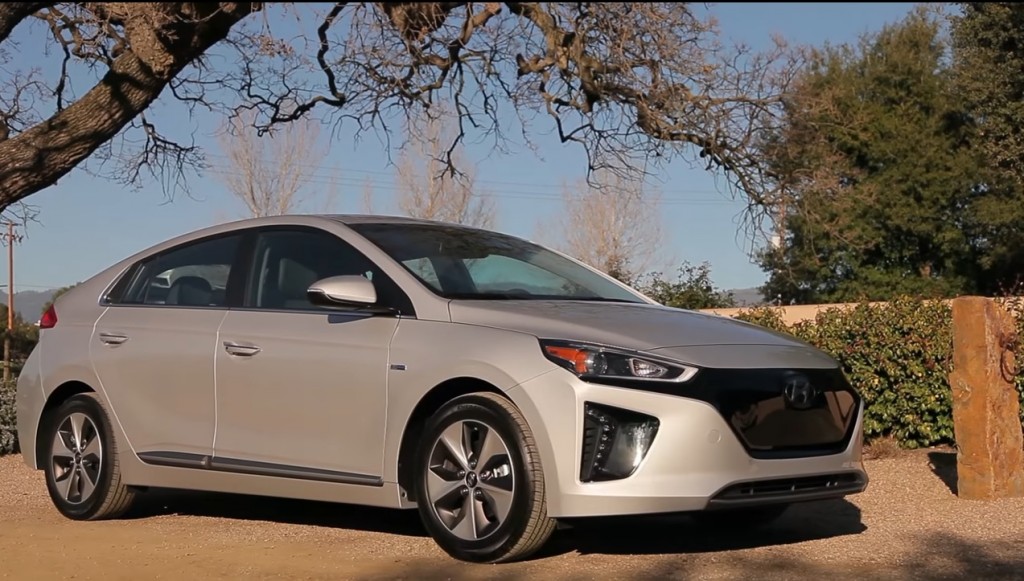The sales growth of electric cars has made strides in recent years, and California's Zero-Emission Vehicle mandate has much to do with that.
The program adopted by the California Air Resources Board 20 years ago, and much modified since, requires carmakers to earn a certain number of zero-emission credits for vehicles sold in California.
What's less well known is that some automakers have already surpassed the expectations, according to David Reichmuth, senior engineer in the Union of Concerned Scientists' Clean Vehicles Program
DON’T MISS: UPS electric van with fuel-cell range extender to be tested in California
So a target formerly considered quite aggressive now seems well within reach.
The numbers of zero-emission vehicles required to meet the regulation correlates to each automaker’s total sales in the state.
Starting in 2018, only two types of eligible vehicles will earn credits, based on their zero-emission range: transitional ZEVs (plug-in hybrids) get fewer credits, and full zero-emission (battery-electric and hydrogen fuel-cell) vehicles get more.

2017 Chevrolet Volt
The program was last reviewed in 2012, when goals for model years 2018 through 2025 were set.
Those goals were resoundingly reaffirmed by the California Air Resources Board in light of the Trump Administration's intent to revisit, and perhaps reduce, national fuel-economy targets.
As of 2018, companies must now begin to increase the credits earned from sales of both types of zero-emission vehicles, starting at 4.5 percent for 2018 and reaching 22 percent for 2025.
READ THIS: Plug-in electric car sales to double in 2018: predictions
In March, the program was reviewed to evaluate whether manufacturers were on track or not. Due to the program's complex math, the sales required vary for each automaker based on its models and timing.
To meet the 22-percent credit requirement, the Board now projects that only 8 percent of total sales need to be zero-emission vehicles, or a cumulative total of about 1.2 million vehicles by 2025.
The change can be chalked up to the credits already accumulated by carmakers, placing some well ahead of their credit targets.

2017 Tesla Model S
Because electric-car ranges have increased faster than anticipated, makers earned ZEV credits more quickly than planned when the rules were first written.
Some are even ahead of their volume targets: BMW leads the pack, with 8.9 percent of its 2016 sales already being plug-in electric vehicles.
That's double the base rate set for 2018. (Tesla, of course, comes in at a 100-percent rating, since it only sells battery-electric cars).
CHECK OUT: Could water be the secret to faster electric-car battery technology?
General Motors comes in second at 7 percent, carried by Chevrolet’s 9.7-percent sales rate for ZEVs (Chevy Spark EV, now Bolt EV) and plug-in hybrids (the two generations of Chevrolet Volt) combined.
Volkswagen and Ford are the last two brands that have already reached their base target, at 6.2 and 4.6 percent of their sales respectively.
Others, however, have some catching up to do.

2017 Hyundai Ioniq Electric - frame from video road test
The introduction of the electric and plug-in hybrid Hyundai Ioniq, along with the Kia Optima and Kia Niro plug-in hybrids, will boost the ZEV sales of Korean maker Hyundai-Kia, currently at 1.3 percent.
Toyota and Honda are last on the board, having sold less than 1 percent of eligible vehicles in 2016. Both have hydrogen fuel-cell vehicles, which receive maximum credits under the system starting in 2018.
Toyota also sold more than 40,000 of its first-generation Toyota Prius Plug-In Hybrid, and its Prius Prime successor launched this year may well do similar volumes.
In other words, the latest analysis shows that meeting California's ZEV targets may be far easier than either regulators or automakers expected.
EDITOR'S NOTE: After this article was first published on May 4, the author of the cited blog post, Dave Reichmuth, contacted Green Car Reports to ask that a number of detail points be clarified. We have updated the article twice to address his concerns and explain the complicated details of the ZEV program better.
— Sabrina Giacomini
_______________________________________











